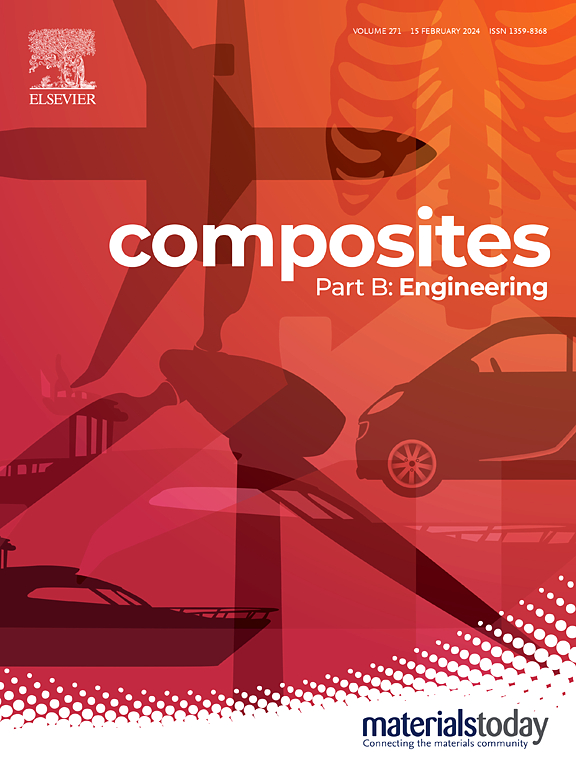Bio-inspired multi-scale coupling for customized mechanical properties in highly particle-filled composites
IF 12.7
1区 材料科学
Q1 ENGINEERING, MULTIDISCIPLINARY
引用次数: 0
Abstract
Highly particle-filled composites often face challenges in achieving satisfactory tensile and impact resistance for practical applications. To address this issue, this study draws inspiration from the hierarchical structures found in natural cortical bone. We fabricated heterogeneous materials with variable modulus by systematically tuning the material compositions at different length scales, from molecular structure, micro/nanoscale to millimeter scale, and assembled them into multilayered gradient-structured composites by the Direct Ink Writing technique. Through different structural configurations, gradient-structured composites achieved up to a 143 % increase in toughness or a 43.5 % improvement in strength. Furthermore, impact resistance was significantly enhanced, with energy absorption capacity increasing by 114 % (from 0.21 MJ/m3 to 0.45 MJ/m3). The unique multi-scale mechanical energy absorption mechanism resulted in the performance enhancement of the multi-level gradient-structure composites. These remarkable improvements demonstrate that constructing multi-level gradient structures is a highly promising strategy for enhancing the mechanical properties of highly particle-filled polymer composites.

仿生多尺度耦合用于高颗粒填充复合材料的定制机械性能
在实际应用中,高颗粒填充复合材料在达到令人满意的抗拉伸和抗冲击性能方面经常面临挑战。为了解决这个问题,本研究从天然皮质骨中发现的分层结构中获得灵感。从分子结构、微/纳米尺度到毫米尺度,通过系统调整材料组成,制备了可变模量的非均质材料,并通过直接墨水书写技术将其组装成多层梯度结构复合材料。通过不同的结构配置,梯度结构复合材料的韧性提高了143%,强度提高了43.5%。此外,抗冲击能力显著增强,能量吸收能力增加114%(从0.21 MJ/m3增加到0.45 MJ/m3)。独特的多尺度机械吸能机制使多层梯度结构复合材料的性能得到增强。这些显著的改进表明,构建多级梯度结构是提高高颗粒填充聚合物复合材料力学性能的一种非常有前途的策略。
本文章由计算机程序翻译,如有差异,请以英文原文为准。
求助全文
约1分钟内获得全文
求助全文
来源期刊

Composites Part B: Engineering
工程技术-材料科学:复合
CiteScore
24.40
自引率
11.50%
发文量
784
审稿时长
21 days
期刊介绍:
Composites Part B: Engineering is a journal that publishes impactful research of high quality on composite materials. This research is supported by fundamental mechanics and materials science and engineering approaches. The targeted research can cover a wide range of length scales, ranging from nano to micro and meso, and even to the full product and structure level. The journal specifically focuses on engineering applications that involve high performance composites. These applications can range from low volume and high cost to high volume and low cost composite development.
The main goal of the journal is to provide a platform for the prompt publication of original and high quality research. The emphasis is on design, development, modeling, validation, and manufacturing of engineering details and concepts. The journal welcomes both basic research papers and proposals for review articles. Authors are encouraged to address challenges across various application areas. These areas include, but are not limited to, aerospace, automotive, and other surface transportation. The journal also covers energy-related applications, with a focus on renewable energy. Other application areas include infrastructure, off-shore and maritime projects, health care technology, and recreational products.
 求助内容:
求助内容: 应助结果提醒方式:
应助结果提醒方式:


